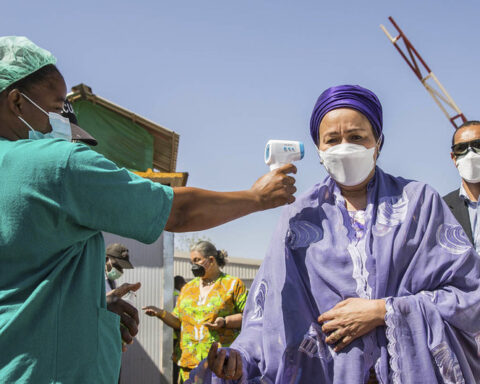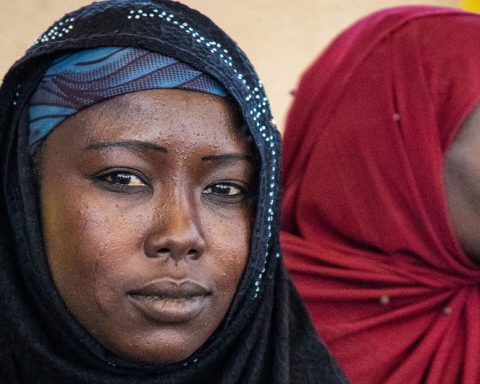With a population of more than 24 million – and an increase of more than 60 per cent in the number of people who need humanitarian assistance – the country ranks last on the Human Development Index (189 out of 189 countries). Niger is facing a complex humanitarian emergency marked by persisting insecurity, endemic poverty and the effects of climate change, which are being further aggravated by the COVID-19 pandemic.
Here are five things you need to know about the crisis in Niger:
1. More than 2 million people face acute and chronic food insecurity
While Niger has made tremendous efforts towards alleviating the suffering of its people, the country has been affected by food insecurity for decades, in part due to recurrent shocks from the effects of climate change, such as droughts and floods that disrupt the agricultural season.
About 100,000 hectares of arable land are lost every year due to water erosion following heavy rainfall, causing the loss of crops and livelihoods for the thousands of affected farmers. The COVID-19 pandemic has also affected food availability due to a slowdown in commercial activities and access to markets.
In 2020, the percentage of people in Niger suffering from acute malnutrition increased to 12.7 per cent, with three regions at 15 per cent or more (the World Health Organization alert level is 10 per cent), while severe acute malnutrition increased to 2.6 per cent. Health experts estimate that 457,200 children aged 6 months to 59 months will suffer from severe acute malnutrition in 2021.
2. More than 1 million people have been displaced countrywide
Persisting insecurity and the impact of floods led to some 530,000 people seeking refuge from violence in 2020, while more than 632,000 people became displaced following the destruction of their houses by torrential rainfall. Most of these people are living with host families or at sites for internally displaced persons. Recurrent displacement exposes the most vulnerable groups, particularly women and children, to the risk of sexual exploitation and abuse.
Humanitarian access to the people in Niger who need assistance is hindered by insecurity. From January to September 2020, 765 security incidents were reported in Niger, and 10 humanitarians were killed.
3. A country at a crossroads
The location of Niger between West, Central, East and North Africa makes it a hub for socioeconomic migration flows. For centuries, nomadic populations have travelled through Niger to let their cattle graze and search for fertile grounds.
Due to its geographic location – twice the size of France – Niger is a major country of origin, transit and destination for thousands of migrants each year. More than 64,000 migrants in Niger are receiving humanitarian aid.
A young girl at a site for refugees in Niamey, Niger, December 2019. Credit: OCHA
4. More than 50 per cent of children between 7 and 16 years old are not in school
Geographic gaps in school coverage and poor retention rates persist in Niger. The quality of education has worsened and inequities have deepened, with the poorest and rural children least likely to attend school.
Less than 60 per cent of primary school students enter secondary school, and although enrolment in lower secondary has nearly doubled, only 20 per cent of students complete the cycle (boys: 23.7 per cent; girls: 17 per cent). Persisting insecurity, safety concerns, the distance to school and child marriage prevent parents from enrolling their children. Severe inefficiencies persist despite the sector benefiting from nearly 20 per cent of the state budget and significant donor support.

5. More funding is urgently needed
The 2020 Humanitarian Response Plan seeks US$516.1 million to provide life-saving assistance to 1.8 million people in Niger. Some $306 million – 59.3 per cent of the required amount – has been received as of the end of 2020, with thanks to donors for their generous support.
During a virtual speech at the Paris Institute of Political Studies in October on the Central Sahel region – which includes Burkina Faso, Mali and Niger – Emergency Relief Coordinator Mark Lowcock, said: “Nowhere scares me more than the Sahel. I fear the region is very close to a tipping point – and so by extension are its African neighbours, Europe, and the world. A preventable tragedy is looming.”
Additional funding is urgently needed for Niger to maintain gains achieved thus far and to address increasing needs, particularly in response to the COVID-19 pandemic.







